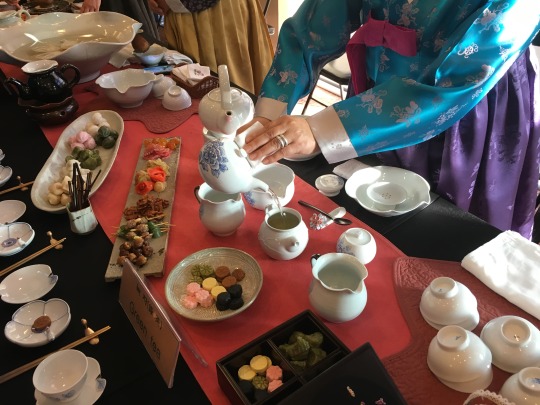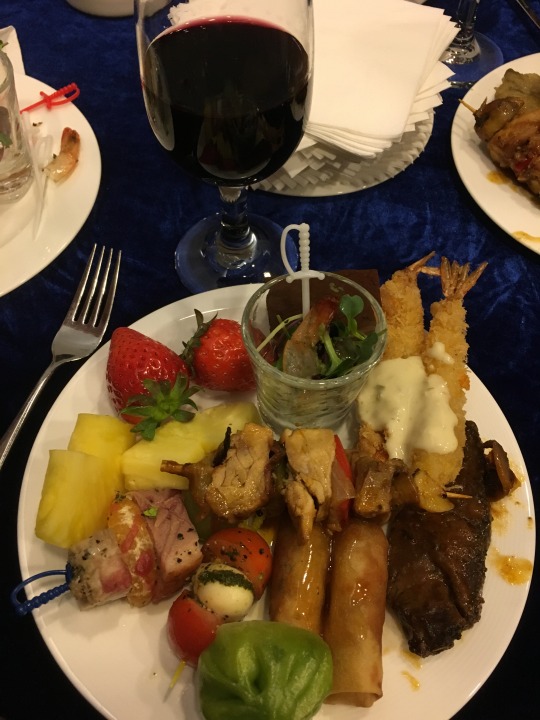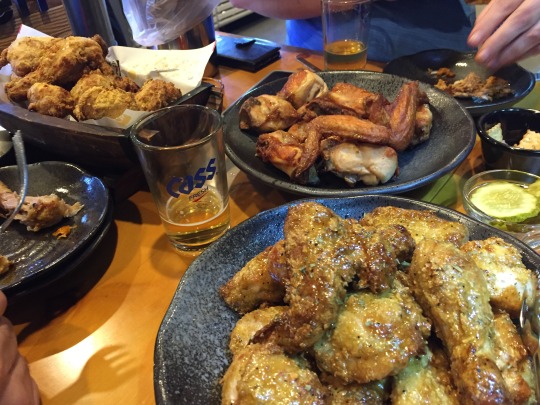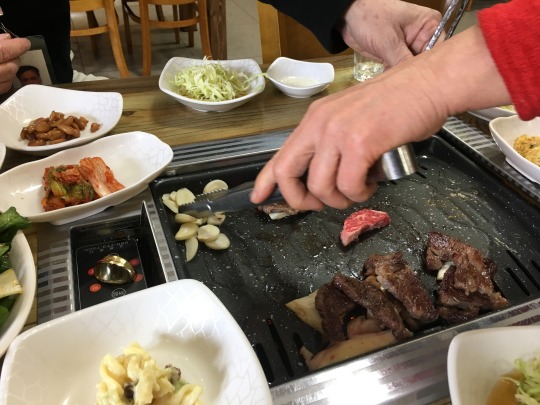#it tastes like the wheat beer back home!! but less alcoholic and sweeter
Text
Kimchi chatter

I don’t think I’ve put anything in my mouth since arriving in Korea that I haven’t liked.
Well, OK, not buckwheat tea. That’s revolting.
Pretty much everything else has been tremendous. The highlights so far are Korean barbeque – it’s more Hibachi than what we’d call BBQ back home – spicy curries and beef bulgogi, which is a dish of thinly sliced beef marinated in soy sauce, sesame oil and other spices.
We’ve had a few special catered events during our time here, including a tea tasting and buffet reception thrown by the provincial governor. (Two words: smoked duck!)

Then, of course, there’s kimchi. Korea’s national dish is served at every meal. The only place I haven’t seen it is a fast-food chicken and burger place that I’ll get to shortly.
Kimchi is cold pickled cabbage and radishes and it is reminiscent of sauerkraut. It’s good, although a little goes a long way. They used to bury it in pots or jars in the ground – I remember a M*A*S*H episode where that was a plot point – mainly to keep them from freezing during the winter.
I have to say, though, that kimshi for breakfast is going too far! But there it is (right, in photo below), in our expansive and quite good media breakfast buffet, right alongside all sorts of other items like dumplings, salads, noodles and stuff I don’t even want to know about. Give me cereal, eggs, bacon, hash browns, pancakes, danish, bagels, toast, fruit, juice and tea -- all available every day -- and I’m good to go.

The only downside to the Korean culinary adventure is that work keeps getting in the way! There are dozens of cool-looking restaurants walking distance or even a short cab ride from media housing, but when you’re wrapping up a 15-hour day a big meal just isn’t happening. A group of us did go to a great chicken place before the competition started – wings and such, prepared any way you can think of.

The media center is in the middle of Alpensia ski resort, so there are cafes and restaurants available for lunch and dinner, and I think we’ve hit them all. There is also a small café in the media center itself, also quite good, but it has about 4 choices so it’s gotten old. The best experience was the BBQ place, which we’ve visited twice. There are little grills at each table, and they prepare the steak and pork in front of you, with a huge array of side dishes and condiments. A little pricey at $45 apiece but worth the indulgence a couple of times (especially since breakfast is free and we can get all the ramen we want in the media center, also for free).

Korea, being a peninsula and in the heart of Asia, has lots of influences in its food culture – noodles are everywhere, and in every possible form; seafood is also plentiful; lots of beef of course. And then there are the unexpected influences of the American presence here during the war: Spam, and fried chicken.

Spam needs no comment other than, really? But the chicken is another story. I hope I’m not sharing bad information, but I was told there are more chicken places in Korea than there are McDonald’s in the world. Hard to believe, but I did read a story that said that lots of people who lost jobs or farms during economic hardships immediately opened fried chicken restaurants.
So far, the only place I’ve tried it is that fast-food joint in the ski town, but it was pretty good. The coating was crispy and not greasy, and the meat was cooked perfectly, both dark and light. I am eager to try it in a “real” restaurant – perhaps when I get to Seoul on Monday.

The beverage situation is a little less exciting. Korean beer is available everywhere, and although they are all basically versions of Pilsners, they are drinkable – far better than the mass-produced swill in both Brazil and Russia. But the national drink, also pretty much ubiquitous, is soju, a vodka-like liquor with an alcohol content around 20 percent for the basic version. I read that it was always fermented from rice until that was banned in the war for a time, and now they use wheat, potatoes and tapioca as well as rice. It’s a little sweeter and more viscous than vodka but less harsh. I haven’t had a lot of it but I do have a small bottle waiting for me in the apartment!
0 notes